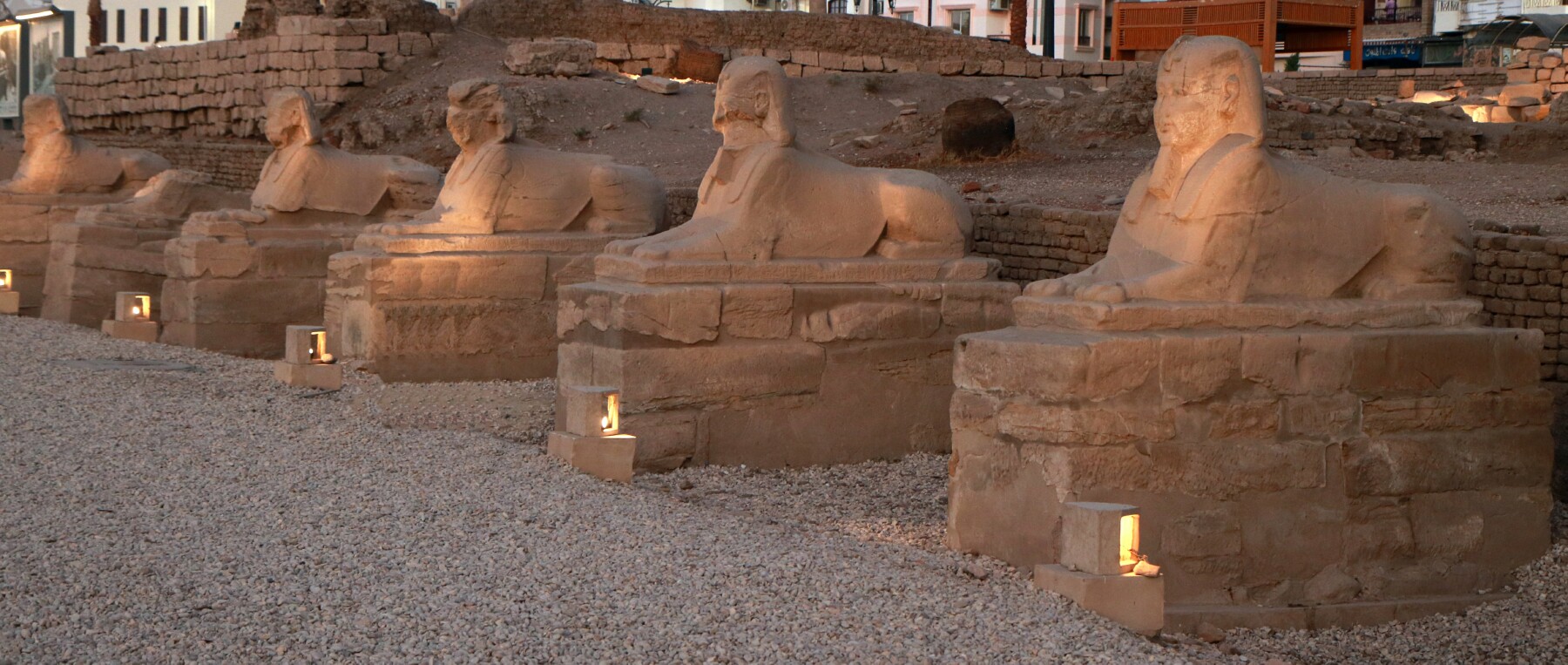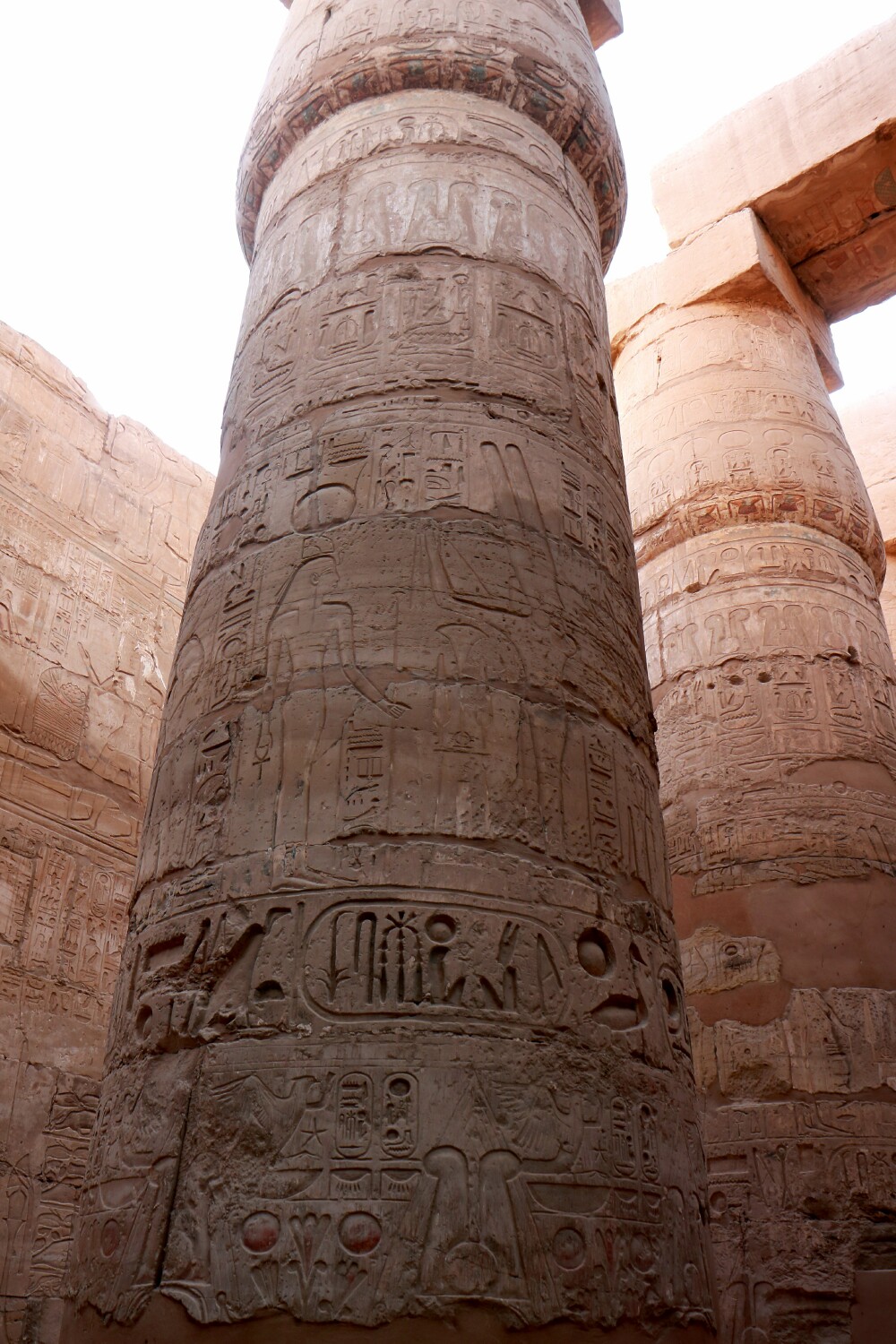Egypt: Day 7
September 22, 2022
|

Above: The Avenue of Sphinxes connects Karnak Temple with Luxor Temple, having been uncovered in the last century from the ancient city of Thebes
(modern Luxor). The avenue is flanked on both sides by lion-headed and ram-headed sphinxes. Construction of the Avenue of Sphinxes began during
the New Kingdom (1550-1077 BC) and was completed during the reign of Nectanebo I (380–362 BC), the road was later buried under layers of sand over the centuries.
It is estimated there are 1057 statues, including 807 lion head and 250 ram head sphinxes, and it is about 2700 metres long.
|
1 and 2 show one more view of the Great Hypostyle Hall on the east side.
3 and 4 show a map of the Luxor Temple and an 1870's view of the temple's condition.
5 and 6 show a 2 of the 1057 sphinxes on Avenue of the Sphinxes, which goes from the Luxor Temple to Karnak.
7 shows two colossal statues of Ramesses II by the entrance to the Luxor Temple. Two 25 m pink granite obelisks built by Ramesses II
once stood before the gateway but today only one remains. The other stands in the Place De La Concorde in Paris.
8 shows hieroglyphs on the Luxor Temple walls, including a couple of Sun and Ducks, Sa-Ra (Son of the Sun god).
9 and 10 show two of the dozens of Ramesses II statues in the Ramesses II Court of the Luxor Temple.
11 and 12 show hieroglyphs of the pharaoh.
|
|
|
|
Touch a number for a picture












Pages to Visit
|
|

|
|